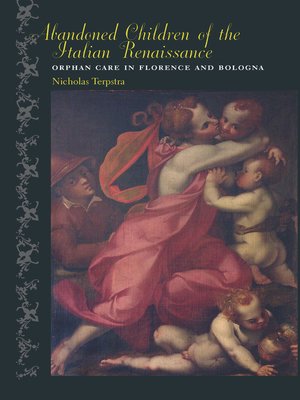Abandoned Children of the Italian Renaissance
ebook ∣ Orphan Care in Florence and Bologna · The Johns Hopkins University Studies in Historical and Political Science
By Nicholas Terpstra

Sign up to save your library
With an OverDrive account, you can save your favorite libraries for at-a-glance information about availability. Find out more about OverDrive accounts.
Find this title in Libby, the library reading app by OverDrive.



Search for a digital library with this title
Title found at these libraries:
| Library Name | Distance |
|---|---|
| Loading... |
In the early development of the modern Italian state, individual orphanages were a reflection of the intertwining of politics and charity.
Nearly half of the children who lived in the cities of the late Italian Renaissance were under fifteen years of age. Grinding poverty, unstable families, and the death of a parent could make caring for these young children a burden. Many were abandoned, others orphaned. At a time when political rulers fashioned themselves as the "fathers" of society, these cast-off children presented a very immediate challenge and opportunity.
In Bologna and Florence, government and private institutions pioneered orphanages to care for the growing number of homeless children. Nicholas Terpstra discusses the founding and management of these institutions, the procedures for placing children into them, the children's daily routine and education, and finally their departure from these homes. He explores the role of the city-state and considers why Bologna and Florence took different paths in operating the orphanages. Terpstra finds that Bologna's orphanages were better run, looked after the children more effectively, and were more successful in returning their wards to society as productive members of the city's economy. Florence's orphanages were larger and harsher, and made little attempt to reintegrate children into society.
Based on extensive archival research and individual stories, Abandoned Children of the Italian Renaissance demonstrates how gender and class shaped individual orphanages in each city's network and how politics, charity, and economics intertwined in the development of the early modern state.







